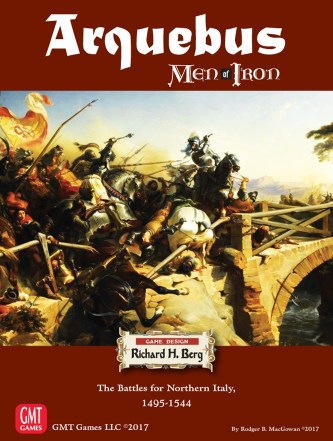Note: I wrote this article in response to questions about history and the Event cards in Mr. President. I hope you find it interesting! – Gene
Monthly Archives: June 2022
Crisis: Britannia — Nero and Britain
by
At the end of our previous installment, the defeated Briton leader, Caratacus, had been betrayed by the Brigantes, and handed over to Rome. However, the rebellious Silures do not seem to have been deterred by the loss of their leader, and continued to resist Roman occupation and engage in hit-and-run guerilla attacks on Roman forces. Such was the tribe’s resistance, that Scapula declared that they would be either exterminated or enslaved and forcibly removed from their lands. But again, this merely served to reinforce their resolve, and they continued to be a bothersome thorn in the side of the Roman Governor and to oppose Rome’s occupation throughout the Claudian period.
Breaking The Line and Holding The Line in Commands & Colors: Ancients by BrentS — Part 2
by
Breaking The Line, Holding The Line
PART TWO
In the last installment we looked at the first two phases for an attacker attempting to break the enemy line, preparation and choosing when to attack.
Zheng He: Commanding Your Fleet
by
Zheng He: Admiral of the Ming Voyages is a solitaire game that recreates the voyages of the Ming treasure fleets in the early 1400s. In the game you take the role of Zheng He, commanding the fleet as it sails the Indian Ocean, earning glory for the emperor, and keeping favor with the ministers of the court so the voyages can continue.
Your fleet is represented by a deck of 20 cards at the start of the campaign. Each card represents a specific type of ship that historically constituted the fleet: Equine, Patrol, Supply, Treasure, and Troop. Throughout the course of your campaign, you will have the opportunity to upgrade your ships, thus increasing the fleet’s capabilities to take on greater challenges.
Borikén: Diving Into the Game
by
Borikén: The Taíno Resistance ended up being quite a big project to work on, especially in the early days of doing research. While I went through many references on the topic, the information was scarce, but many referenced one historical book that I ended up using as the backbone of the historical narrative of my design, and that was Agüeybaná: El Bravo by Jalil Sued Badillo. What was interesting about this book is that the author used the original historical texts as his sources in his analysis of the historical period, instead of referencing the historical narrative of Spanish historians of the 16th Century and afterwards.
Dalhousie’s Influence on the Indian Railways
by
How did railroads begin in India?
Any account of the history of railroading in India must of course begin with James Andrew Broun-Ramsay, the 1st Marquess of Dalhousie Castle, referred to hereafter merely as “Lord Dalhousie.”[1] He served 8 years as the Governor-General of India from 1848 to 1856 at the very end of the first century of British colonial occupation of the subcontinent (Battle of Plassey, 1757).
The Other Infernal Machine: The Tale of the Union Navy’s “Submarine Propeller” Part 1 – The Development
by
I propose to you a new arm of war, as formidable as it is economical.
Submarine navigation, which has been sometimes attempted, but as all know without results, owing to want of suitable opportunities, is now a problematical thing no more.”
(French nautical designer Brutus de Villeroi, in a letter to U.S. President Abraham Lincoln.)
Though the “H.L. Hunley” is widely known as the first submarine to sink an enemy warship in combat, it was by no means the only submarine to come out of the American Civil War. The construction team headed by James McClintock and Baxter Watson who built the “Hunley” had already completed and tested two other designs for underwater vessels. Though there were other designs created and built south of the Mason-Line, they were by no means the only submersibles being built in North America in the 1860’s.
Arquebus Replay: The Battle of Ceresole — Part 4
by
Conquest: Britannia – Claudius and the Establishment of Roman Britain
by
Rebellion: Britannia is a game about rebellions in Roman Britain, and concentrates largely on the Claudian period, which ran from 43CE to 69CE. Over the course of a quarter of a century, there were at least 5 major rebellions that the invading Roman forces had to deal with, including Boudicca’s revolt, which is certainly the most widely known.
After Julius Caesar’s initial expedition to Britain in 55BCE, almost an entire century would pass before Rome eventually chose to stage an invasion of the British Isles. Emperor Augustus considered an invasion, but failed Roman efforts to subdue the German tribes, and the disastrous defeat at Teutoburg in 9CE, led to him cautioning Rome to restrict its lands to those “within its present frontiers” (Tacitus, Annals, I.11), advice which his successor, Tiberius, chose to follow.











